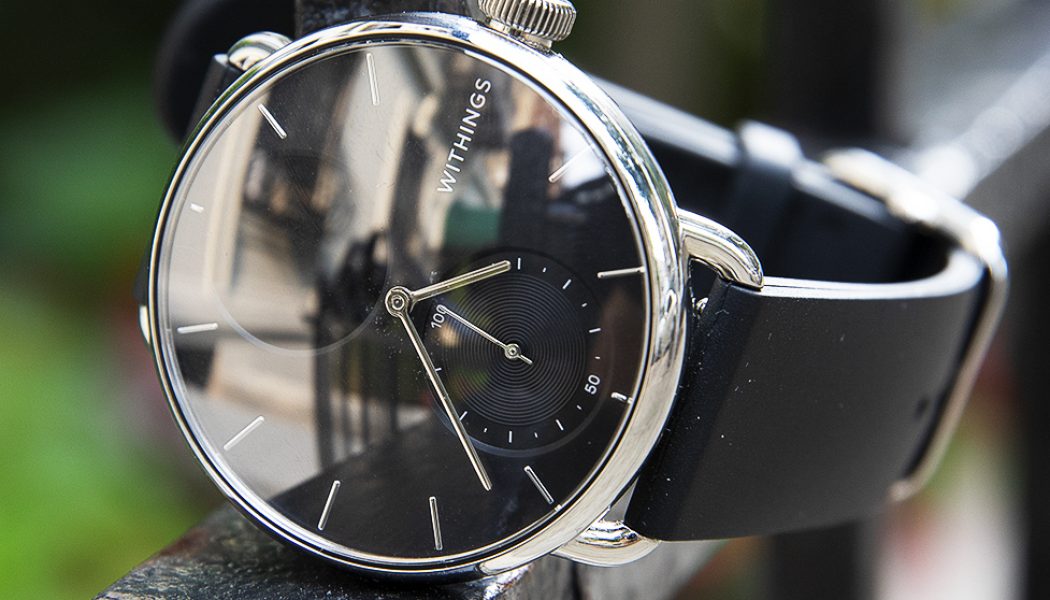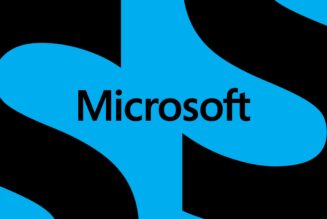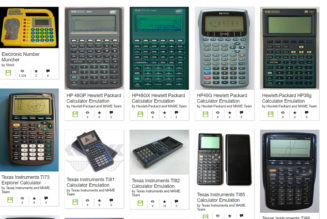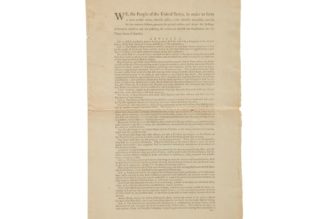I’ve never been interested in buying a smartwatch. I’m fine getting notifications on my phone, and I don’t want to obsessively monitor my step count. I stick with my normal, analog watch, where I can check the time without seeing email notifications or getting sucked into Instagram.
That’s probably why I liked wearing the new Withings ScanWatch so much — it gave me the benefits of a smartwatch, with fewer of the features that I think are stressful.
The $279-plus ScanWatch isn’t available for sale in the United States yet because it needs clearance from the Food and Drug Administration for certain health features, like its enhanced sleep monitoring. But I got to test it out ahead of time, and I used it as an opportunity to check in with some experts about how well smartwatches can actually integrate into sleep medicine.
Like other Withings watches, this one doesn’t scream smartwatch right out of the box. Most of my friends and family didn’t even notice I was wearing it — at a glance, it looks similar to the analog watch I wear most days. It’s comfortable, and the watchface (I tried the 38mm) is small and compact. The small screen activates when you click the crown, and it displays the time and date. Turning the crown scrolls through the features: heart rate, EKG, blood oxygen, workouts, and so on. It switches back off with just a few seconds of inactivity.
Withings says the ScanWatch battery lasts for 30 days. I didn’t try it for quite that long, but the battery ticked down so slowly that I’d believe it. After a day or so of regular wear, I had the familiar flash of panic that a device was about to flicker off — but when I checked the battery, it was still in the 90 percent range. The battery drains more quickly when you set the sleep feature to monitor your oxygen levels overnight but still not nearly enough to send me running for a charger.
:no_upscale()/cdn.vox-cdn.com/uploads/chorus_asset/file/21900763/akrales_200916_4186_0014.0.jpg)
The watch syncs with Withings’ Health Mate app. It took me two tries to get the watch to pair with my iPhone, but it wasn’t enough of a roadblock to cause more than a hint of frustration. You can connect multiple devices to the same app, and you can add multiple family members, as well. All the data the watch collects is easily available, and it’s not difficult to dig up what you’re looking for.
You can also get notifications from emails, texts, phone calls, Instagram, Slack, and other apps, if you want them. An incoming text buzzes the watch, and the message slides across the screen. It doesn’t linger, though, and you can’t go back and look at it later. Nor can you respond to a message from the watch. There aren’t any third-party apps. You can’t see calendar entries, you can’t control music, and there’s no voice assistant. Compared to other smartwatches, it’s about as basic as you can get and you won’t be ditching your phone when you wear this. The notifications are more just reminders to pick up your phone.
But I could also turn them all off and limit any notifications to a quick buzz when I hit my activity goal. I set it to 8,000 steps a day — which in normal times would be an easy target, but the pandemic means I didn’t hit it as often as I’d like. The app didn’t yell at me when I only walked 200 steps in a day, though, which kept it low stress. I liked the workout feature: I took the watch on a few runs, and it gave me the basic stats on the duration, distance, and my heart rate.
The main selling points for the ScanWatch, though, are its health features. Like the Apple Watch, Samsung Galaxy Watch 3, and the Fitbit Sense, it has a heart monitor that can detect atrial fibrillation, a type of abnormal heart rhythm. It also has a blood oxygen monitor, like many Fitbits, Garmins, and the new Apple Watch Series 6.
The COVID-19 pandemic made those monitors, called pulse oximeters, a must-have home health tool. Blood oxygen is an important metric to monitor in patients with the disease, and it can flag problems before people start to feel out of breath. A spike in demand led to shortages in typical, fingertip devices, and many people said they looked to smartwatches as a substitute.
Smartwatches measure blood oxygen from the wrist, though, which may not be as accurate as the fingertip. Pulse oximeters use wavelengths of light to measure how much oxygen is in the blood — oxygenated and non-oxygenated blood absorb different wavelengths. At the fingertip, the light passes through the finger. At the wrist, it’s reflected, which may make it less reliable.
It was definitely less reliable for me. It sometimes took a few tries to get a result at all — after sitting still for the 30 seconds it takes to run the scan, it often told me the result was inconclusive. When I did get a reading, the ScanWatch kept saying that my blood oxygen levels were around 88 or 89 percent, but when I double checked with a fingertip device, it showed they were actually around 98 percent. Anything below 95 percent is considered low.
:no_upscale()/cdn.vox-cdn.com/uploads/chorus_asset/file/21900760/akrales_200916_4186_0105.0.jpg)
Withings says its oxygen sensor can help detect sleep disturbances that may be a sign of sleep apnea, a medical condition where people stop breathing periodically during sleep. Because it’s making that medical claim, it needs sign-off from the FDA before it can be sold and marketed in the US. (The Apple Watch Series 6 just says its blood oxygen monitor is for “wellness,” so it doesn’t yet need the same approval). Fitbit also wants the same type of clearance for a sleep apnea-detecting feature. The new Apple Watch says it measures blood oxygen automatically through the night, so sleep apnea detection might be up next on Apple’s roadmap.
The first night I slept with the watch on, I checked the app right when I woke up, and it told me I’d only slept for about three hours. That was definitely wrong. When I checked again an hour or so later, though, it had adjusted and said I’d slept for just over eight hours. That made a lot more sense. I didn’t have the same issue with the other nights I wore the watch. It said I had a few breathing disturbances through the night, which is normal.
:no_upscale()/cdn.vox-cdn.com/uploads/chorus_asset/file/21909513/IMG_2136.jpg)
The ScanWatch also showed the amount of time I was in “light sleep” and “deep sleep,” it and produced a sleep score, much like Fitbit’s devices that track sleep. That information was interesting to see — but I didn’t have a good sense of what it actually meant. So, after wearing it for a few nights, I talked to some sleep experts about how much I could actually learn from the statistics it — or any other smartwatch — gives me.
Can smartwatches actually monitor your sleep?
Like other health features on wearables, sleep monitoring technology has improved over the past five years. “When I first started looking into this space, it was extremely early days, and I was not terribly impressed with the information I would see from these devices,” Susheel Patil, clinical director of the Johns Hopkins Pulmonary Sleep Medicine Program, told me. Now, the sensors on the devices are better, and the understanding of the information coming from the sensors is better.
But smartwatches can still only tell you so much. They’re good at calculating the total amount of time healthy people spend asleep. They’re usually just measuring time at rest, though. If someone has insomnia and spends hours lying very still and trying to sleep, a smartwatch might think that they’re actually asleep, says Chris Depner, who studies sleep at the University of Utah.
The charts that show how much time you spend in deep sleep versus light sleep also don’t tend to be reliable for most people. The stages of sleep as measured by smartwatches are only accurate about half of the time. “It’s just like a flip of a coin. It could be accurate for you, or it could actually be horribly inaccurate,” Depner says.
:no_upscale()/cdn.vox-cdn.com/uploads/chorus_asset/file/21909559/IMG_2135.jpg)
It’s not clear what counts as deep sleep for the different devices. There’s a fine line between the different stages of sleep, and there are different ways to calculate them. Even among experts, people use deep sleep to mean different things, says Seema Khosla, medical director of the North Dakota Center for Sleep. Some might lump non-REM and REM sleep together, for example, while others would differentiate between them.
At a high level, the sleep stage feature might help give a general idea of how someone is sleeping. But they can also be misleading. “I tend to trust when the devices might tell me someone is awake, verses when someone is asleep,” Patil says. “But I don’t put a lot of emphasis on the differentiation between light sleep and deep sleep.”
Diagnosing an illness
Smartwatch companies aren’t satisfied with just measuring sleep — Withings and its competitors think their products can help identify sleep disorders. FDA-cleared heart monitors are ubiquitous on the devices, and sleep features aren’t far behind. Khosla is enthusiastic about the devices’ potential. Experts estimate that around 80 percent of sleep apnea goes undiagnosed, she says. “It’s kind of a ridiculous number.” If smartwatches could make a dent in it, that’d be a major benefit.
A sleep apnea feature, or even conversations about the potential for one, could also draw attention to the disorder. “That’s a good thing,” Patil says. “It raises the profile of the problem, and could get people to talk with their clinicians.”
For now, though, smartwatch-diagnosed sleep apnea is more of an exciting possibility than a clinical reality. The ScanWatch (and eventually, Fitbit) relies on the blood oxygen levels taken through the night to figure out if someone’s breathing stops and starts — and it’s not clear how well those wrist oxygen monitors can reliably do that. In addition, while oxygen level is one of the metrics doctor’s use to diagnose sleep apnea, it isn’t the only one: they also measure the flow of air through the nose, and the amount of constriction in arteries at the wrist.
Smartwatches could be more useful as a way to screen people for sleep apnea and find people who might need additional followup, Khosla says. “A lot of people do initial screens using a pulse oximeter anyway,” she says. Having normal readings on a smartwatch blood oxygen monitor through the night wouldn’t necessarily rule out sleep apnea, if someone has other symptoms — people can have normal oxygen levels but still have the disorder. But it could be a way to find people who have abnormal results and need evaluation to see if they actually have a problem.
:no_upscale()/cdn.vox-cdn.com/uploads/chorus_asset/file/21900754/akrales_200916_4186_0159.0.jpg)
“It still does require that clinical expertise to say, ‘well, does it make sense?’ You don’t want to treat the gadget, you want to treat the patient,” Khosla says.
Doctors also may have to run additional tests on patients with a sleep apnea alert because they usually can’t see the algorithms or methodology that a smartwatch or app uses. They’re limited to the same information that a wearer sees, because most of the details are proprietary information — companies don’t share the inner workings of their tech. “It’s a black box,” Khosla says. “We have to have faith in that black box, which is hard.”
More information could be available on the inner workings of a device that has FDA clearance. The clearance documents include more information about the validation process than just the marketing materials provided by a company. But there isn’t enough transparency yet, Khosla says. “I think the solution is going to be the industry folks working with the clinical folks, so that we can have a better understanding of what’s in the black box. And they can have a better understanding of why we care so much.”
Interpreting your own data
It’s pretty common, now, for patients to bring in a readout from a wearable device to an appointment with a sleep doctor. It’s helpful — it adds some objectivity to how many hours someone says they sleep at night, for example, Patil says. Khosla loves when patients bring in their wearable data. “I think we have to embrace it,” she says. “And it’s not all terrible data. Some of it is helpful.” Lately, wearables have helped her see how patients’ sleep patterns are changing during the pandemic.
The data is less important, though, than how someone feels. That’s the first thing people should think about, before they look at the sleep score on an app. “Take stock of how you feel when you wake up. Did I actually sleep well, am I rested, or was I up all night?” Khosla says. Then, compare that to what the device says. “And then see if they match.” Making those comparisons can help you figure out how much stock to put in the results each morning.
Paying attention to changes in the patterns can also be helpful, Depner says. “If you have regular readings for six months, and suddenly something changes, it could be saying something about your sleep,” he says. If there aren’t reasons, like illness or stress, that could explain a change, it might be a good idea to have a doctor’s evaluation.
The most important thing is to put the data in context and not rely on it to give conclusive answers on sleep or sleep disorders. “It’s an area of great promise,” Patil says. “But we have to be very well balanced and careful, and understand the limitations of the technology.”
I spent a few weeks with the ScanWatch and wore it to bed (although not every night — sleeping with it on wasn’t the most comfortable). But, after speaking with the sleep experts, I didn’t give the sleep data more than a passing glance in the mornings. If anything seemed way off target, I would have paid more attention. But I never saw anything other than a normal-looking sleep pattern and a pretty accurate record of the hours I spent in dreamland. It’s comforting that nothing concerning jumped out, but I don’t know for sure what any of it tells me about my overall health. My sleep score won’t be something I brag about.










